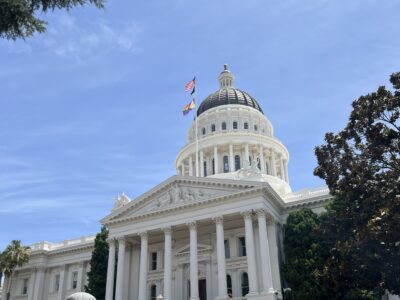California Poised to Take a Major Step Forward on Energy Storage

Energy storage isn’t called the “Holy Grail” for nothing. Without it, we simply cannot meet our long-term greenhouse gas reduction goals. To decarbonize the energy supply, intermittent renewable energy from the sun and wind must be stored for later dispatch when those resources aren’t available. We’ve covered this subject extensively here and here.
Now California is ready to once again fulfill its promise as a global leader in clean technology and climate change mitigation. As part of the regulatory process started by AB 2514 (Skinner, 2010), the first-in-the-nation energy storage law, California Public Utilities Commissioner Carla Peterman issued a proposed decision on Tuesday to set energy storage procurement targets for California’s utilities. Guest blogger Ken Alex referred to the draft proposal in his post on the subject.
In our 2011 UC Berkeley Law report for the California Energy Commission (co-authored with UCLA and UC San Diego), we recognized that California may require between 3,000 to 4,000 megawatts of fast-acting energy storage by 2020 to integrate the projected increase in renewable energy and meet the state’s greenhouse gas goals. While Commissioner Peterman did not go that far, she set a target of 1325 megawatts to be procured by the three investor-owned utilities in the state and 1% of peak load for community choice aggregators by 2020. The targets contain a number of checks and offramps if things don’t go well before 2020.
In short, Peterman is proposing a “no regrets” target for a complicated universe of diverse technologies at various stages of deployment with multiple potential roles for customers and grid operators, all set within the highly regulated world of electricity. But if it’s successful, it could lead to mass deployment of energy storage the way California’s energy policies have boosted solar and wind and is now moving the electric vehicle market. These targets send a clear market signal, and if prices for these technologies decrease as a result, expect the targets to be increased in the coming years (or become unnecessary via market forces).
Some interesting details: the proposal excludes pumped hydro as counting towards the targets. These massive projects (pumping water uphill from reservoirs to release later and spin turbines) are simply too big and would crowd out other emerging technologies meant to benefit from the targets, much the way large-scale hydropower is excluded from meeting the state’s renewable portfolio requirements. In addition, Peterman backed off her earlier proposal to create a “reverse auction mechanism” for energy storage, due to concerns that the diverse technologies could not fairly compete in single auctions and that the auctions wouldn’t adequately account for system benefits. Instead, Peterman proposes a broader “request for offer” or RFO that will provide utilities with more flexibility. The RFOs also enable diverse ownership arrangements, with third parties contracting with utilities and utilities even eligible to own customer-side energy storage resources. Utilities would issue the RFOs in December 2014.
The full commission will consider Peterman’s decision on October 3rd, so things could change. But if they keep this decision largely intact, California will once again be at the forefront of pushing a global clean tech market and filling in the missing technology pieces needed to avert the worst impacts of climate change.
Reader Comments
One Reply to “California Poised to Take a Major Step Forward on Energy Storage”
Comments are closed.







Pumped storage should be a part of the mix.
We already have significant capacity( PG&E, and DWR).
Existing hydro should also be managed to smooth out peaks and valleys on the grid. Some incentives should be provided to hydro to better integrate into the growing wind and solar energy system.